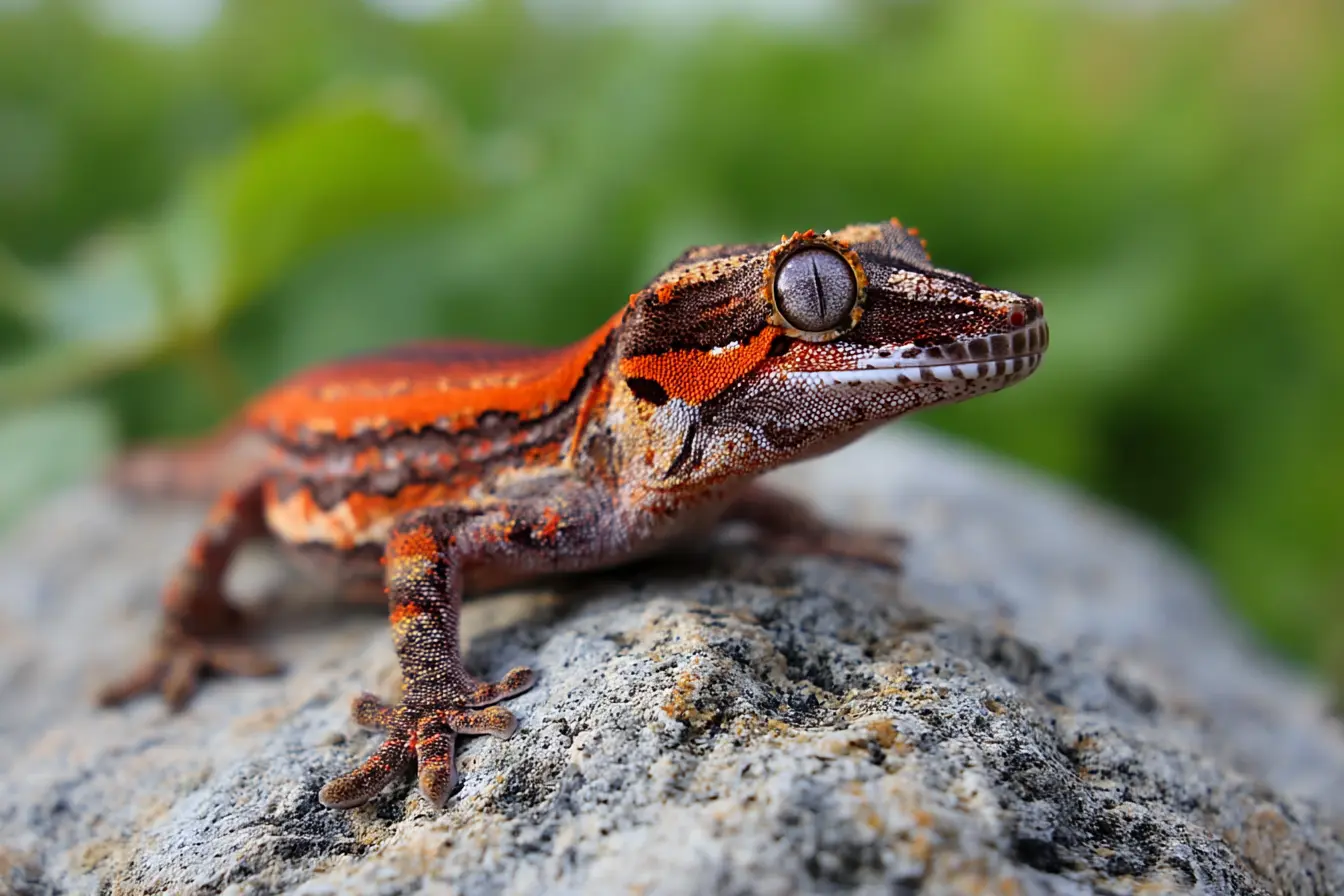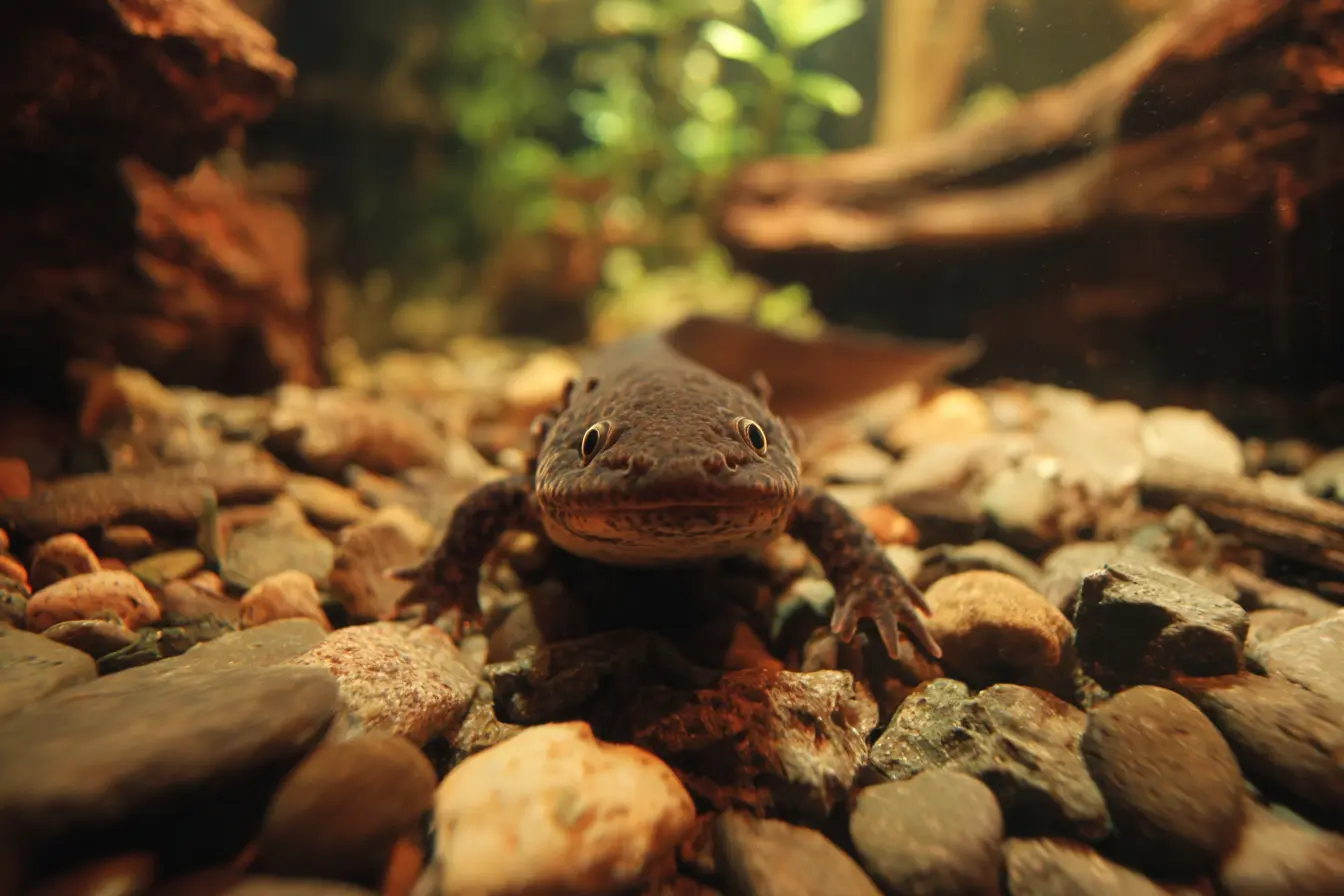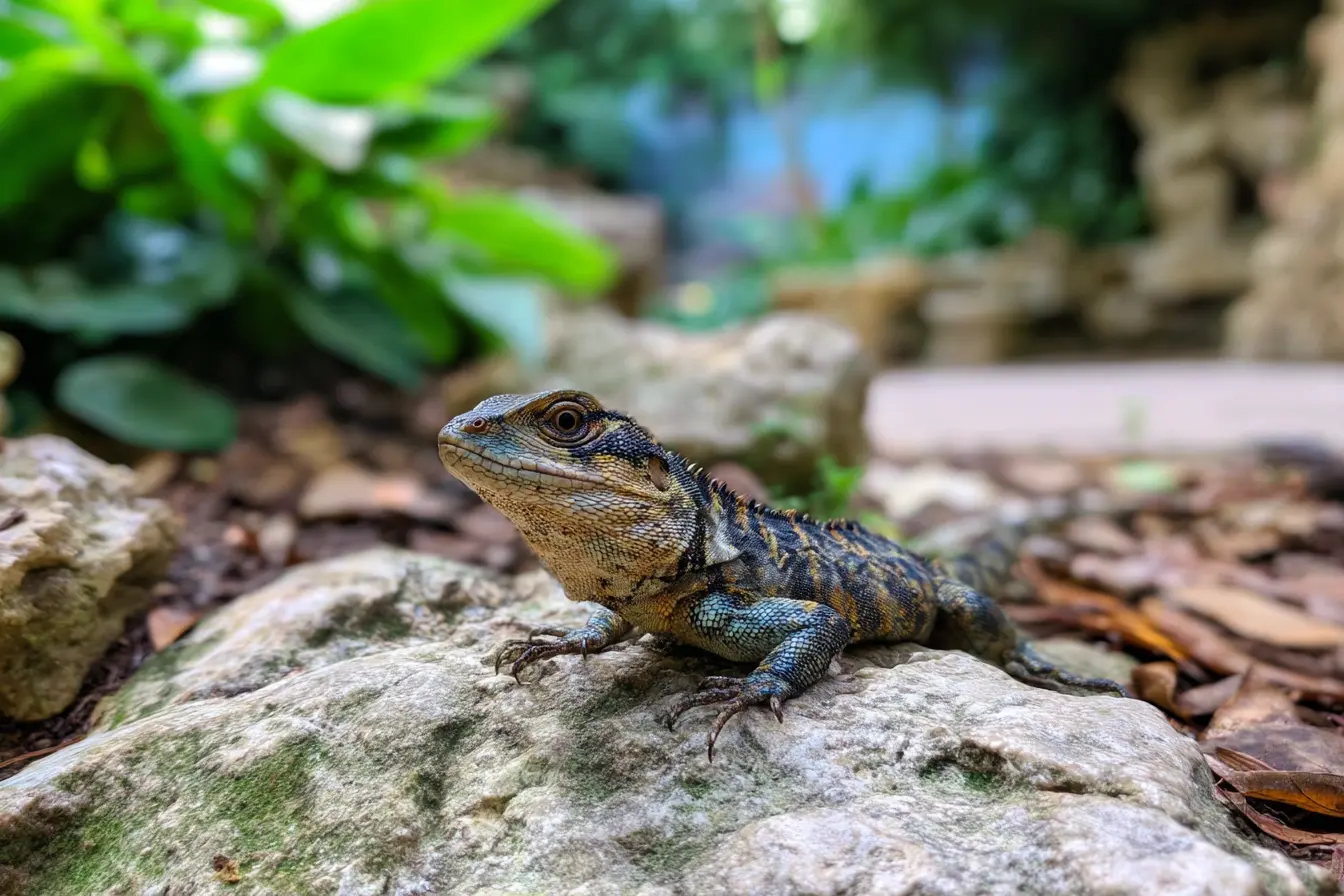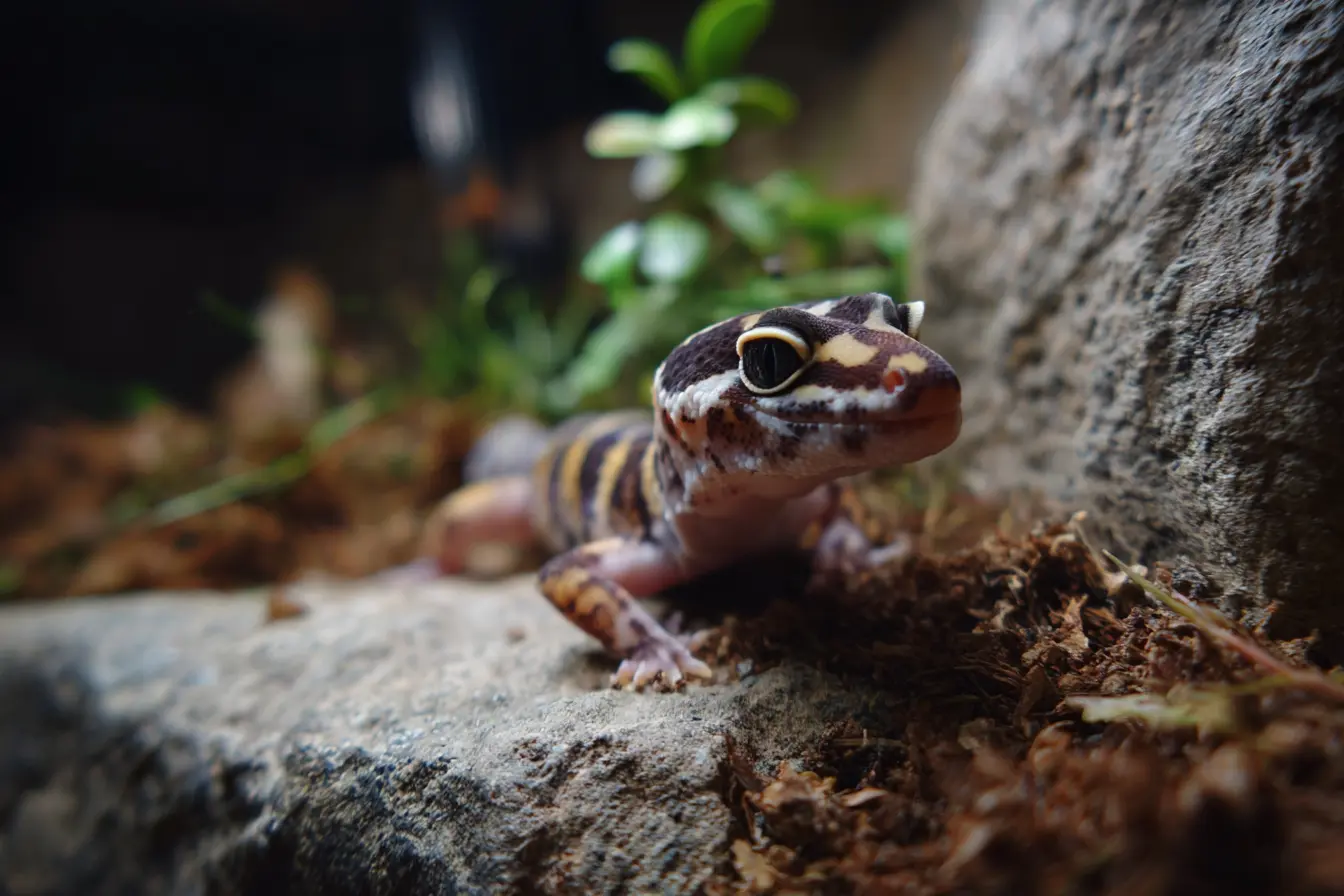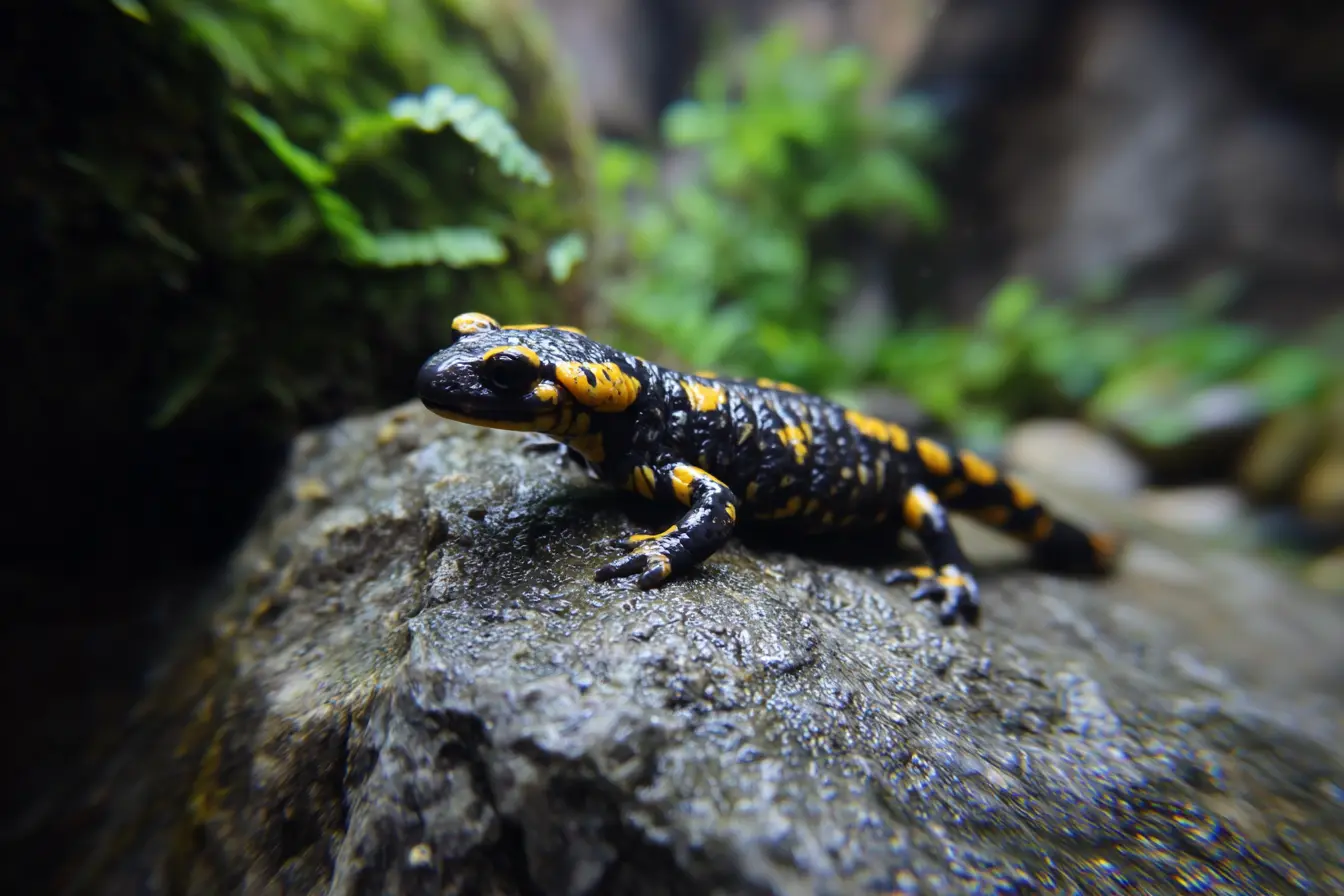
Keeping the Cantabrian Fire Salamander: A Comprehensive Guide
The Cantabrian fire salamander (Salamandra salamandra bernardezi) is a striking subspecies of the fire salamander, endemic to the cool, mountainous regions of northern Spain. Famous for its vivid black and yellow markings and small, manageable size, this salamander is cherished among amphibian enthusiasts for its hardy nature and vibrant appearance. With proper care, the Cantabrian fire salamander can thrive in captivity and offers a fascinating glimpse into the world of European amphibians.
This guide covers everything you need to know about the Cantabrian fire salamander, from its physical traits and habitat needs to feeding, breeding, and general care.
Physical Characteristics
Size
- Adults are smaller than other fire salamander subspecies, reaching lengths of 10–16 cm (4–6.5 inches).
Lifespan
- With attentive care, Cantabrian fire salamanders can live for 15–20 years, with some individuals reportedly living even longer in optimal conditions.
Colouration and Skin Texture
- Exhibits a smooth, glossy black body adorned with bright yellow patterns that can vary from spots to broad bands depending on locality.
- This striking colouration serves as a warning to predators of their toxic skin secretions.
Sexual Dimorphism
- Females are typically larger and more robust, particularly noticeable during the breeding season.
- Males have slightly slimmer builds and an enlarged cloaca when mature.
Legal and Ethical Considerations
Due to their limited natural range and conservation status, it is essential to ensure any Cantabrian fire salamander you acquire is captive-bred. Wild capture is prohibited across much of Europe, and adhering to legal and ethical sourcing supports both the welfare of the animal and wild populations.
Check local and national wildlife regulations before obtaining this species, and always buy from reputable breeders who specialise in captive breeding of European amphibians.
Housing and Enclosure Setup
Cantabrian fire salamanders are terrestrial as adults and require an enclosure that mimics the cool, moist woodlands of their native habitat.
Enclosure Size
- A single adult requires a terrarium of at least 45 litres (12 gallons), with more space always preferable.
- A 75-litre (20-gallon) terrarium or larger is recommended for pairs or small groups.
Substrate
- A deep layer (7–10 cm) of moisture-retentive substrate is crucial, such as:
- Organic topsoil (free of pesticides)
- Coconut fibre
- Leaf litter mixed with sphagnum moss
- A bioactive setup with springtails and isopods can help with natural waste management and encourage natural behaviours.
Hides and Decor
- Provide multiple hiding places using cork bark, pieces of wood, stones, and deep leaf litter.
- Live moss and safe, low-light plants help to maintain high humidity.
- A shallow water dish of clean, dechlorinated water should always be available.
Temperature and Humidity
- Temperature: 14–18°C (57–64°F) is ideal. Avoid temperatures above 22°C (72°F), as this can cause stress or illness.
- Humidity: 70–90%, maintained through regular misting and a moisture-retentive substrate.
- Seasonal cooling during winter months can be beneficial for health and breeding.
Lighting
- Cantabrian fire salamanders are nocturnal and do not require special lighting.
- Natural daylight or low-level lighting is sufficient to maintain a natural day-night cycle.
- UVB lighting is optional but can help with plant growth in bioactive enclosures.
Diet and Feeding
Cantabrian fire salamanders are insectivores and should be fed a varied diet of appropriately sized invertebrates.
Suitable Food Items
- Earthworms (a staple food source)
- Crickets
- Waxworms and mealworms (sparingly, due to high fat content)
- Woodlice (isopods)
- Small roaches
- Black soldier fly larvae
- Springtails (for juveniles)
Feeding Schedule
- Juveniles: Feed every day or every other day.
- Adults: Feed 2–3 times per week with an emphasis on variety to ensure balanced nutrition.
Supplementation
- Dust insects with a calcium supplement once weekly.
- Use a high-quality reptile multivitamin supplement every 2–4 weeks, especially for breeding females.
Behaviour and Handling
Cantabrian fire salamanders are fascinating to observe but are not suitable for regular handling due to their delicate, permeable skin.
Behaviour
- Mostly nocturnal and secretive, spending the day hiding under logs or leaf litter.
- Become more active in the evening or after misting.
- Generally docile and non-aggressive, making them excellent display animals.
Handling
- Handling should be kept to a minimum and done with clean, wet hands or powder-free gloves if necessary.
- Always wash hands thoroughly before and after any contact to protect both you and the animal.
Health and Common Problems
Cantabrian fire salamanders are robust with proper care, but like all amphibians, they are sensitive to poor environmental conditions.
Common Health Issues
- Dehydration: Caused by low humidity or dry environments.
- Overheating: Due to high ambient temperatures.
- Obesity: From overfeeding fatty prey items.
- Fungal and bacterial infections: Resulting from poor hygiene or inadequate ventilation.
Preventative Care
- Maintain high humidity and cool temperatures.
- Ensure a clean, bioactive, or regularly cleaned enclosure.
- Provide a varied diet with appropriate supplementation.
- Quarantine any new animals before introduction to prevent disease transmission.
Breeding Cantabrian Fire Salamanders
Breeding Cantabrian fire salamanders in captivity is achievable with correct environmental conditions.
Breeding Triggers
- Cooling the enclosure to 10–12°C (50–54°F) during winter months stimulates breeding behaviour.
- Increasing feeding before cooling (brumation) can improve breeding success.
Reproduction
- Courtship involves a mating dance, after which the female stores sperm for later fertilisation.
- Females give birth to fully metamorphosed young or larvae in water, depending on locality.
- Provide a shallow aquatic area if larvae are expected.
Larval Care
- If larvae are born, they require a separate aquatic enclosure with cool, clean, dechlorinated water.
- Feed larvae live foods such as daphnia or baby brine shrimp.
- After metamorphosis, transition juveniles to a terrestrial setup with suitable hiding places.
Conclusion
The Cantabrian fire salamander is a captivating species ideal for enthusiasts who enjoy creating naturalistic setups and observing subtle, nocturnal behaviours. Their bold colouration, manageable size, and hardy disposition make them an attractive option for responsible amphibian keepers.
With proper housing, a cool, humid environment, and a nutritious diet, Cantabrian fire salamanders can thrive in captivity, providing many years of enjoyment. Though not suited for frequent handling, they make fascinating, low-maintenance pets for those interested in the vibrant world of European amphibians.
Related Vets
Vets near you
Speciality vets
- Aquatics vet specialists
- Birds vet specialists
- Camelids vet specialists
- Cats vet specialists
- Cattle vet specialists
- Deer vet specialists
- Dogs vet specialists
- Equines vet specialists
- Exotic vet specialists
- Goats vet specialists
- Pigs vet specialists
- Poultry vet specialists
- Sheep vet specialists
- Small Mammals vet specialists
- Wild vet specialists
